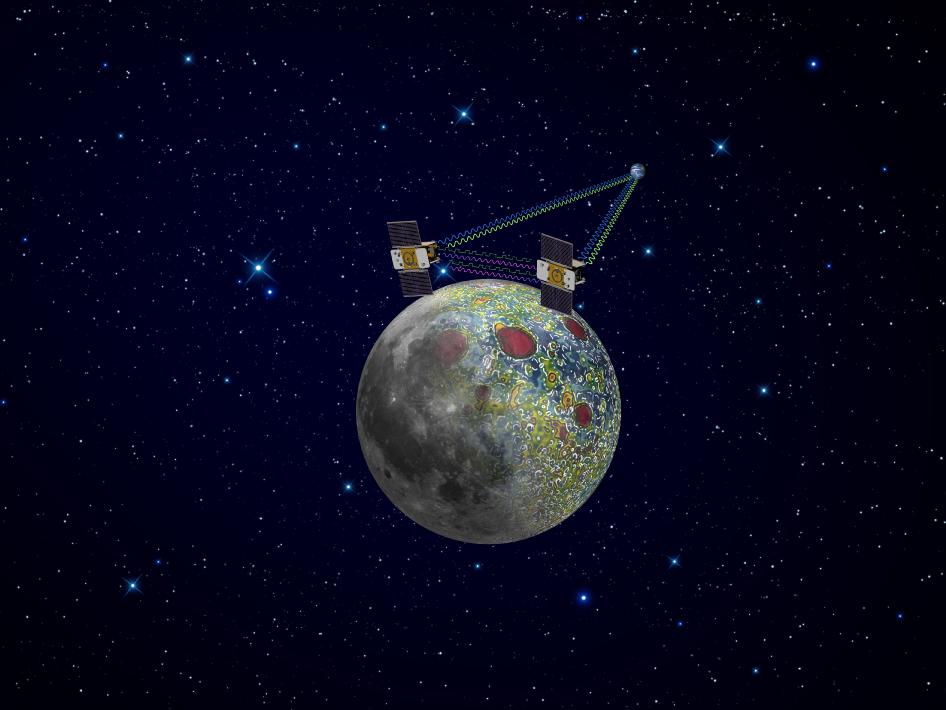
Late last year, a pair of spacecraft completed their mission to probe the hidden inner structure of the Moon by precisely mapping out its gravitational field. The
Gravity Recovery and Interior Laboratory (GRAIL) mission revealed details and features that had never been seen before like tectonic structures, volcanic landforms, basin rings, crater central peaks and many simple bowl-shaped structures.
The GRAIL mission worked by sending two small spacecraft (GRAIL-A and GRAIL-B) into the same orbit around the Moon, each about the size of a washing machine. The craft were equipped with a device called the Lunar Gravity Ranging System, to measure the distance between them (which varied from 65 to 225 kilometers as the mission progressed through different stages) to an accuracy of microns. If the leading spacecraft were to pass through a region of slightly higher gravity, it would speed up by a very small amount, causing the gap between the two craft to open up slightly. By measuring these subtle changes, scientists can accurately map the Moon’s gravity field, and from this calculate its mass distribution, which in turn reveals the structure beneath the surface.

This image shows the final flight path for NASA’s twin Gravity Recovery and Interior Laboratory (GRAIL) mission spacecraft, which impacted the moon on Dec. 17, 2012. Their successful prime and extended science missions having been completed, the twin GRAIL spacecraft Ebb and Flow were sent purposefully into the moon because their low orbit and fuel state precluded further scientific operations. Image credit: NASA/JPL-Caltech/GSFC/ASU
And the results? It turns out that the Moon’s crust is a lot less dense than had previously been thought. “With our new crustal bulk density determination, we find that the average thickness of the moon’s crust is between 21 and 27 miles (34 and 43 kilometers), which is about 6 to 12 miles (10 to 20 kilometers) thinner than previously thought.” said GRAIL co-investigator Mark Wieczorek of the Institut de Physique du Globe de Paris. “With this crustal thickness, the bulk composition of the moon is similar to that of Earth. This supports models where the moon is derived from Earth materials that were ejected during a giant impact event early in solar system history.”
The GRAIL mission ended 17 December 2012 when, having completed mapping the Moon’s gravity field, the two craft were deorbited and crashed into a mountainside in order to blast material upwards and give us a glimpse of what lies beneath the surface.
Like this:
Like Loading...
Related


